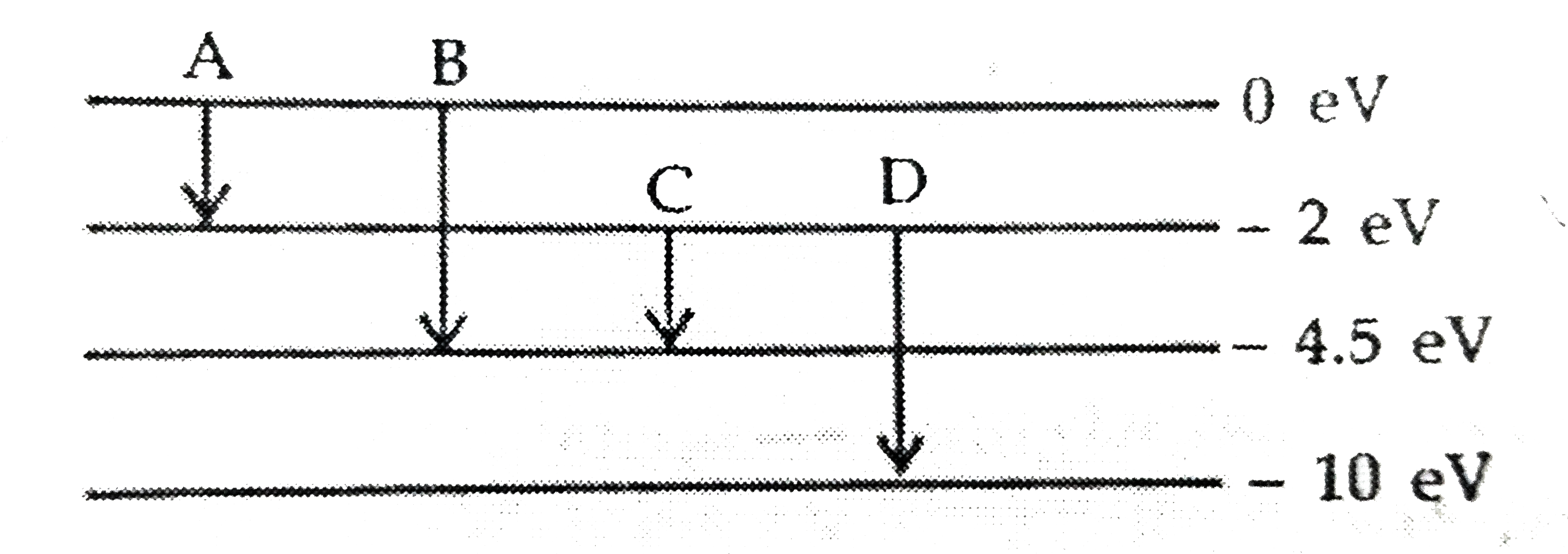Complete Solutions to Exercise 4.1 of chapter ATOMIC PHYSICS of Class 12 book with complete answers and questions
| Class 12 | PHYSICS |
| Chapter | ATOMIC PHYSICS |
| CENGAGE PHYSICS | Exercise 4.1 |
| Number Of Questions | 15 |
| Academic Year | 2023-24 |
State the Following statement as statements as TRUE and FALSE.
a. The redius of nth Bohr is proporitional to `n^(2)`.
b. The total energy of electron in the nth orbit is inversely proporitional to `n^(2)`.
c. The time period revolution of electron in the nth orbit is directly proporitional to `n^(2)`.
d. The kinetic energy of electron is double of its potential energy with a negative sign.
e. Velocity of electron in an atom is independent of its mass.
f. Only balmer series of hydrogen atom lines in the visible range.
g. The angular momentum of an electron revolving in the first orbit of hydrogen is equal to that in first orbit of helium.
h. The binding energy of decuterium atom is more than that of hydrogen atom.
i Lyman series of hydrogen atom lines in the infrared region.
View SolutionTransition between three energy energy levels in a particular atom give rise to three Spectral line of wevelength , in increasing magnitudes. `lambda_(1), lambda_(2)` and `lambda_(3)`. Which one of the following equations correctly ralates `lambda_(1), lambda_(2)` and `lambda_(3)`?
View SolutionA hydrogen atom in a having a binding of `0.85eV`makes transition to a state with excited energy `10.2eV`(a) identify the quantum number n of theupper and the lower energy state involved in the transition (b) Find the wavelength of the emitted radiation
View SolutionCalculate (a) the wavelength and (b) the frequencey of the `Hbeta`
line of the Balmer series for hydrogen.
View SolutionFind the longest and shortest wavelengths in the Lyman
series for hydrogen. In what region of the electromagnetic spectrum does each
series lie?
View SolutionUsing the known values for haydrogen atom, calculate
. (a) radius of thirdj orbit for `Li^(+2)`
. (b) speed of electron in fourth orbit for `He^+`
. (c ) angular momentum of electron in 3rd orbit of `He^+.`
View SolutionA small particle of mass m moves in such a way that the
potential energy `U = ar^2`, where a is constant and r is the distance of the
particle from the origin. Assuming Bhor model of quantization of angular
momentum and circular orbits, find the radius of nth allowed orbit.
View SolutionAn imaginary particle has a charge equal to that of an electron and mass 100 times the mass of the electron. It moves in a circular orbit around a nucleus of charge + `4 e`. Take the mass of the nucleus to be infinite. Assuming that the Bhor model is applicable to this system. (a)Derive an expression for the radius of `n^(th)` Bhor orbit. (b) Find the wavelength of the radiation emitted when the particle jumps from fourth orbit to the second orbit.
View SolutionHydrogen gas in the atomic state is excited to an energy level such that the electrostatic potential energy of H-atom becomes `-1.7 eV`. Now, a photoelectric plate having work function w=2.3 eV is exposed to the emission spectra of this gas. Assuming all the transitions to be possible, find the minimum de-Broglie wavelength of the ejected photoelectrons.
View SolutionTaking into account the motion of the nucleus of a hydrogen atom , find the expressions for the electron's binding energy in the ground state and for the Rydberg constant. How much (in percent) do the binding energy and the Rydberg constant , obtained without taking into account corresponding values of these of these quantities?
View SolutionAn electron having energy `20 e V` collides with a hydrogen atom in the ground state. As a result of the colllision , the atom is excite to a higher energy state and the electron is scattered with reduced velocity. The atom subsequentily returns to its ground state with emission of rediation of wavelength `1.216 xx 10^(-7) m`. Find the velocity of the scattered electron.
View SolutionAccording to classical physics, an electron in periodic motion with emit electromagnetic radiation with the same frequency as that of its revolution. Compute this value for hydrogen atom in nth quantum theory permit emission of such photons due to transition between adjoining orbits ? Discuss the result obtained.
View Solution(a) The enegy levels of an atom are as shown below. Which of them will result in the transition of a photon of wavelength 275 nm ?

(b) Which transition corresponds to emission of radiation of maximum wavelength ?
View SolutionThe ground state energy of hydrogen atom is -13.6 eV.
(i) What is the kinetic energy of an electron in the `2^(nd)` excited state ?
(ii) If the electron jumps to the ground state from the `2^(nd)` excited state, calculate the wavelength of the spectral line emitted.
View SolutionSuppose that means were available for stripping `28` electrons from `_29 Cu` in vapour of this metel.
a. Compute the first three energy level for the remaining electron.
b. Find the wavelength of the spectral line of the series for which `n_(1) = 1, n_(2) = 3,4`. What is the ionization potential for the last electron?
View Solution
Exercise 4.1 questions and complete solutions for chapter ATOMIC PHYSICS of CENGAGE PHYSICS (ENGLISH) of Class 12